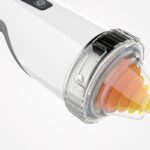lymphedema is a condition of localized fluid retention and tissue swelling caused by a compromised lymphatic system. It results in swelling in limb. However, lymphedema can also occur in other parts of the body, such as the neck, genital region, inguinal region, face, etc. Approximately 1/3 to 1/4 of lymphedema cases have a primary cause that has led to an impairment of the lymphatic system. Women are six to ten times more likely to develop primary lymphedema than adult men are.
Secondary lymphedema occurs if a secondary reason is responsible for the damage that affected the lymphatic system. See what you should know about lymphedema, its treatment, and why compression garments for lymphedema is essential.
Three Stages of lymphedema
Depending on the progression of the disease, we can divide lymphedema into three stages.
In stage-A, you can witness poor lymphatic channel. However, there is no swelling. A mild change is seen in fat tissue composition, however, curable. It can take months or years for the swelling to occur. In Stage I, fluid buildup decreases when you elevate the affected limb. When pressed by the fingertips, the affected area recedes and reverses with the elevation.
In stage II, limb elevation rarely reduces tissue swelling. The grooves are evident. Later, the limb cannot contract when excess subcutaneous fat and fibrosis develop. Stage III represents lymph elephantiasis, where sulci may be absent and changes in the skin occur, such as changes in skin characteristics and thickness, additional fat development, fibrosis, color, etc.
What causes lymphedema?
We can classify lymphedema into two subtypes – primary lymphedema and secondary lymphedema.
Hereditary: Primary lymphedema is believed to be the result of a congenital abnormality of the lymphatic conduction system.
Acquired: Secondary lymphedema results from damage to the lymphatic system or from functional impairment. Insect bites, heavy injuries or severe burns of fat tissues can cause lymphedema. Severe obesity, any type of surgery, serious injury, or radiation to treat cancer or the tumor can cause the disease to develop.
The use of compression is essential
Several products are used for compression therapy. Inelastic multilayer bandages are typically used in the first phase, with the main objective of reducing limb volume as much as possible. They provide very rigid compression and even treat the limbs with extremely delicate shapes. Compression garments for lymphedema are mainly used for the treatment of long-term lymphedema in the maintenance phase. This stiffer compression option is best used under conditions of stabilized limb volume.
Flat compression stockings also treat extremely shaped limbs. Bandages with hooks or rings can be used in the first and second phases of therapy. The bandages are easy to put on and take off, being easily adjustable to vary the compression level and adapt to changes in limb volume. Circular compression mesh stockings are only worn in the early stages of lymphedema, where extremity volume has not yet reached extreme sizes. The other benefit attributed to compression garments is that they act as reinforcement for the tissue, mimicking its function.
How do I recognize lymphedema?
If you find out any of these or all of these symptoms, there is a chance that you have lymphedema. However, the symptoms depend on level and category of the disorder.
- Swelling in one or more limbs,
- If the lower extremity is involved, the swelling is present in the back of the foot,
- Painless, tight feeling, and restricted range of motion,
- Thick or indurate skin, depending on the stage of lymphedema,
- Recurrent skin infections, depending on the stage of lymphedema,
- Positive Stemmer’s sign, depending on the stage of lymphedema,
In the end
There are different treatment possibilities for lymphedema. The leading edge treatment is complex physical decongestion therapy. Complex physical decongestion therapy is based on manual lymphatic drainage and medical compression. You can also wear compression garments for lymphedema. Skin care is also very important.
In a review of more than 30 researches on the effects of compression garments, a positive result of its use was observed. In these studies, athletes reported experiencing less pain when wearing compression garments than when not wearing them. No studies have found negative physiological effects with the use of compression garments.











